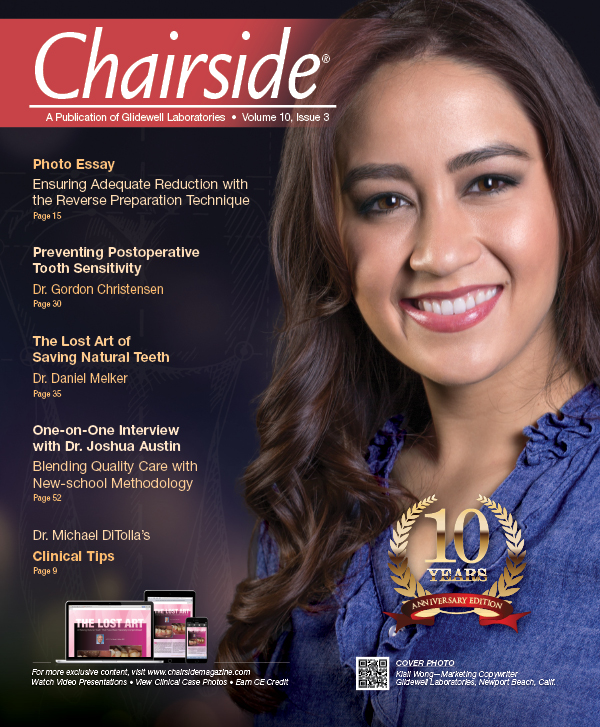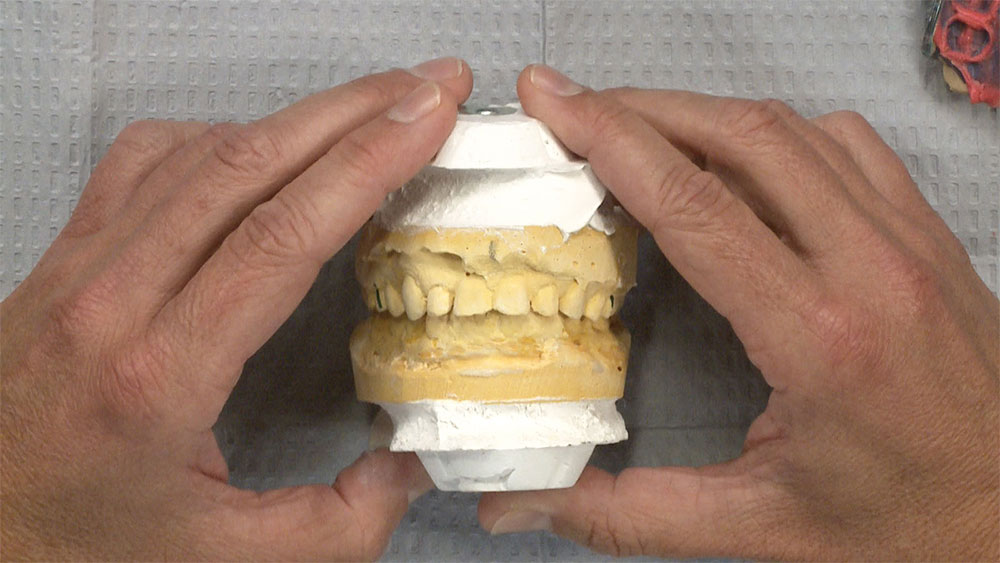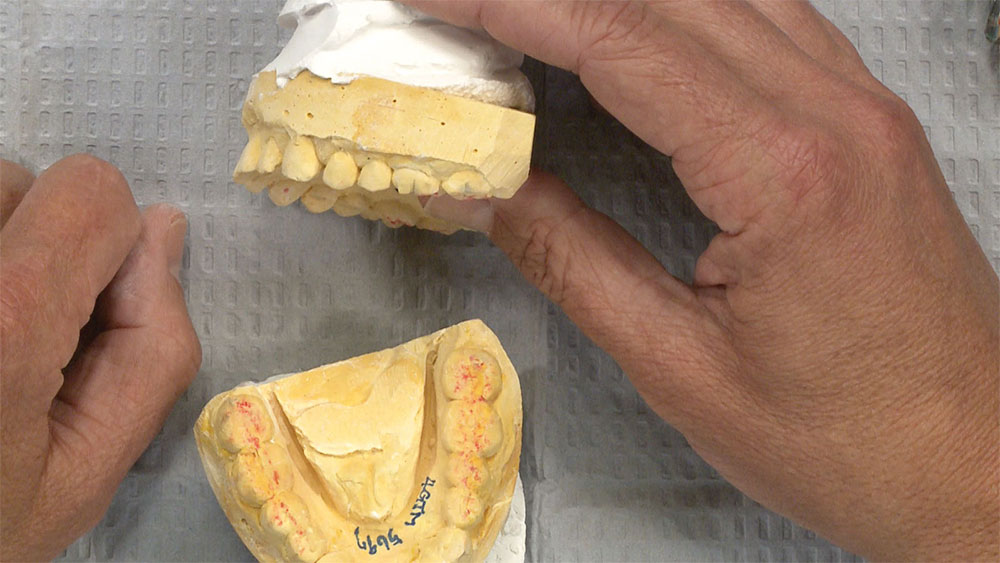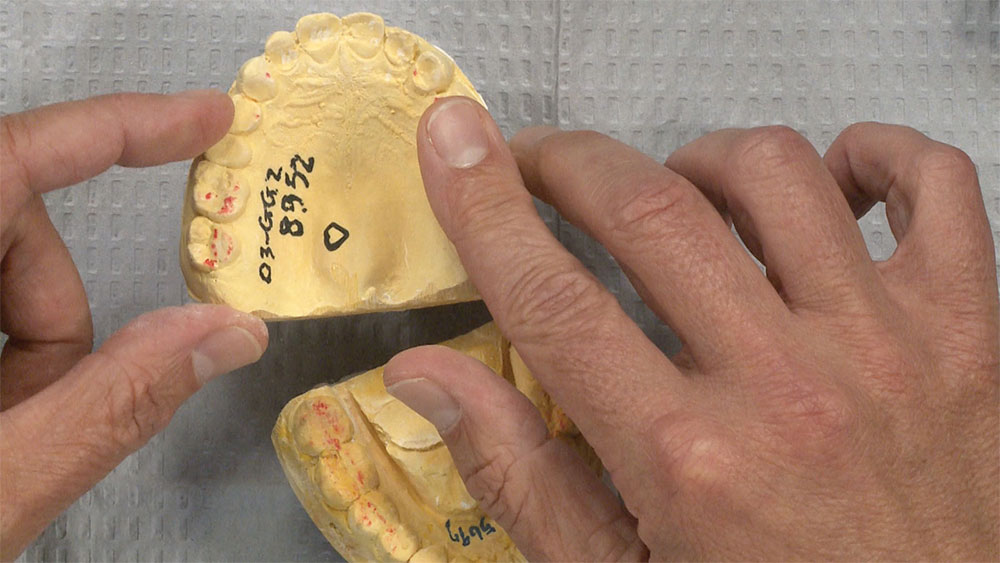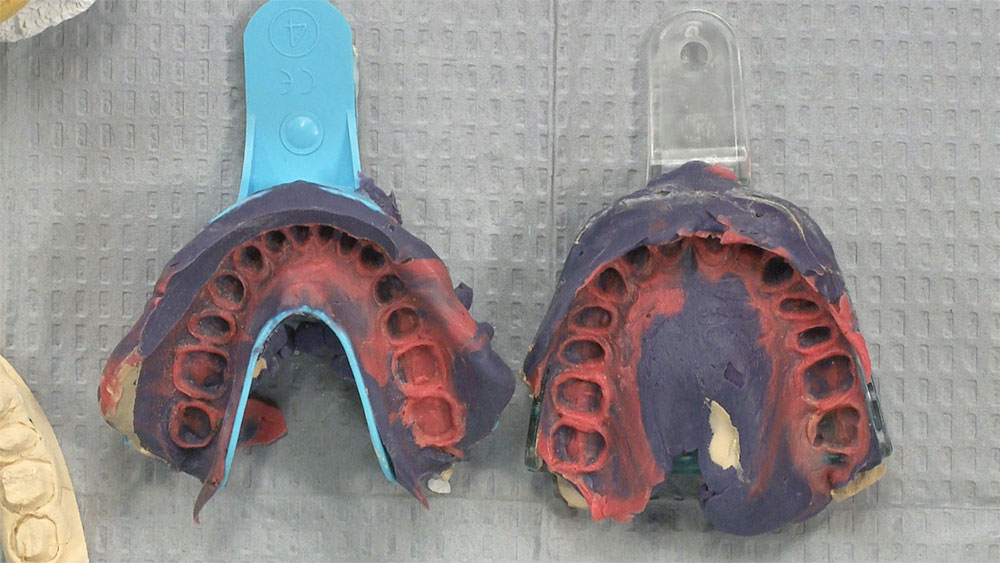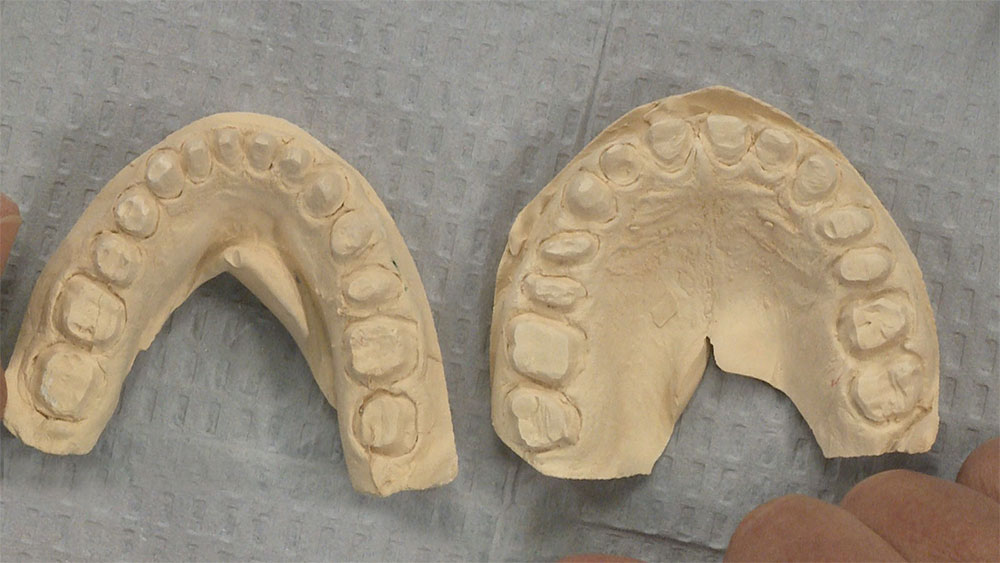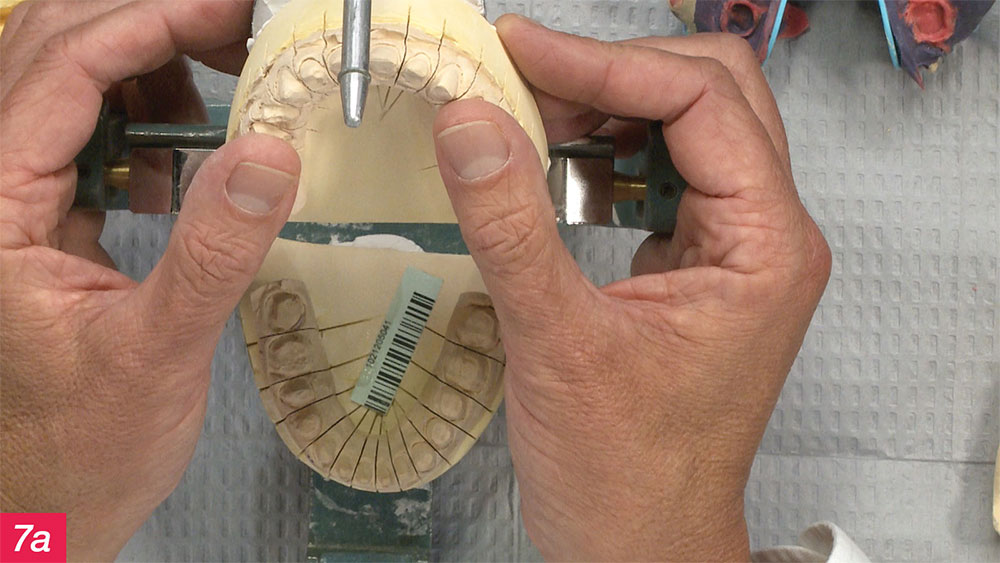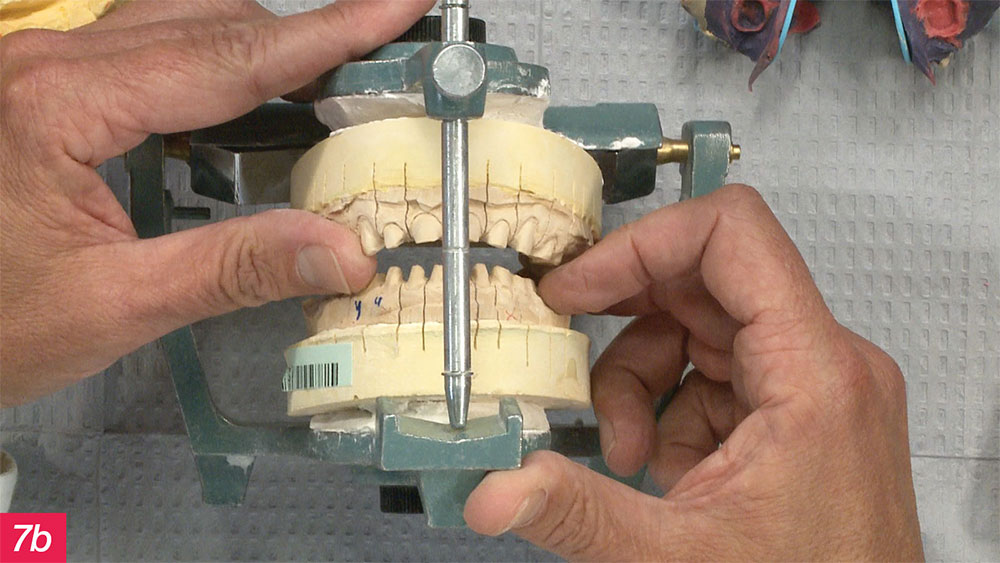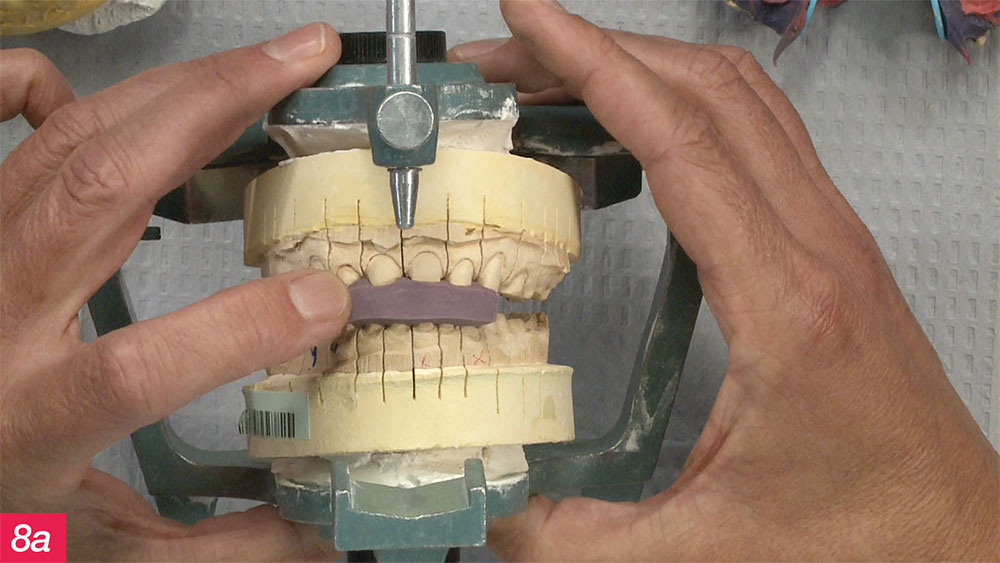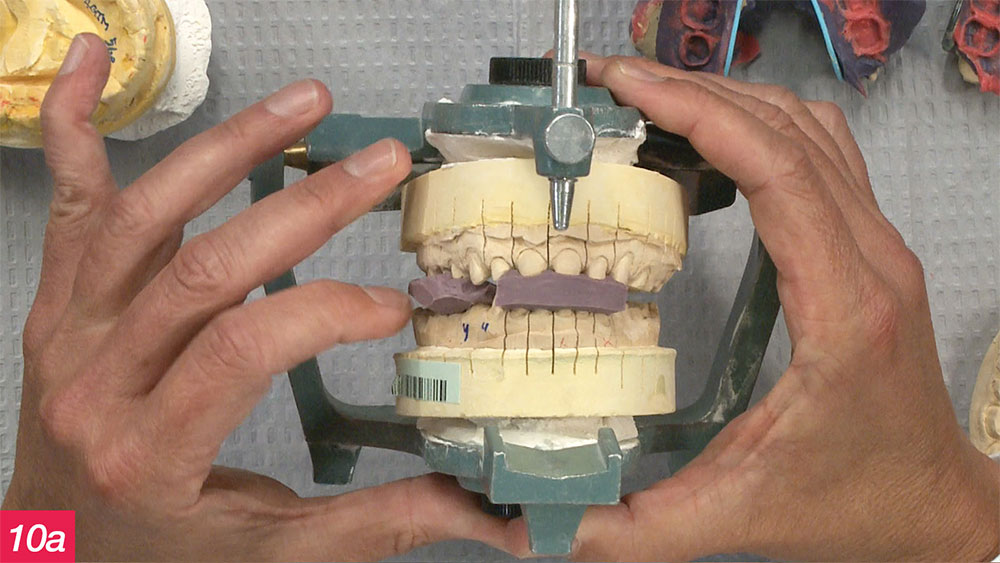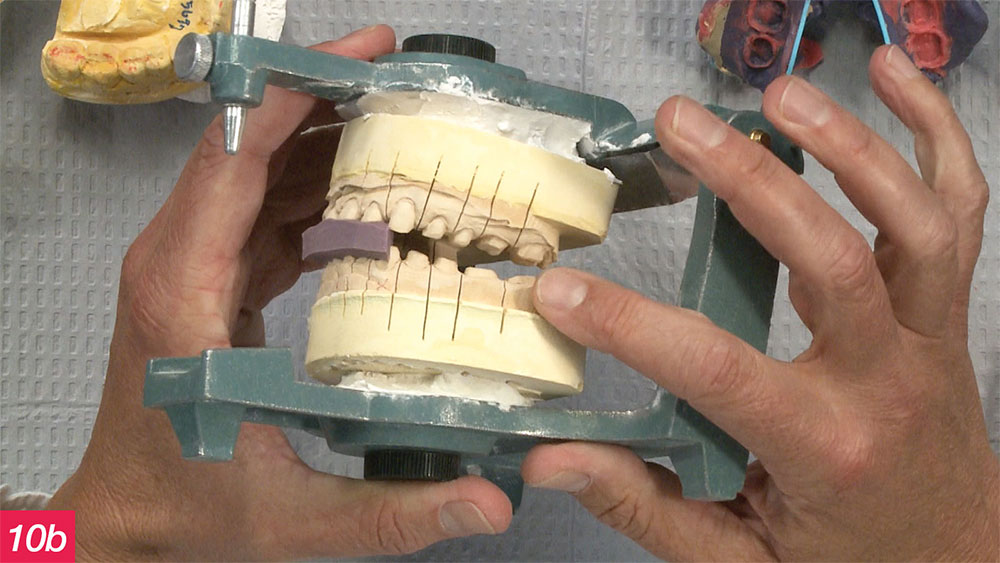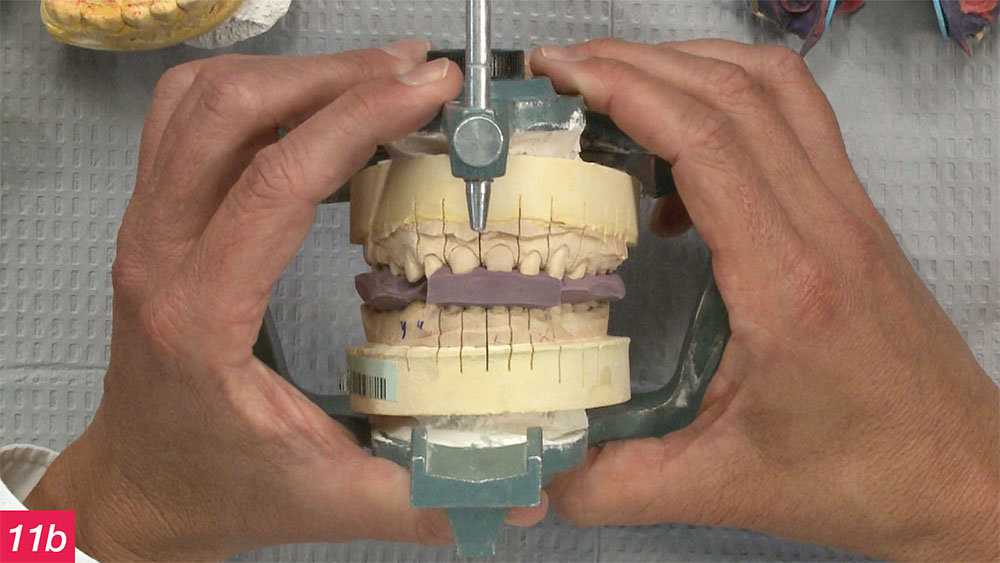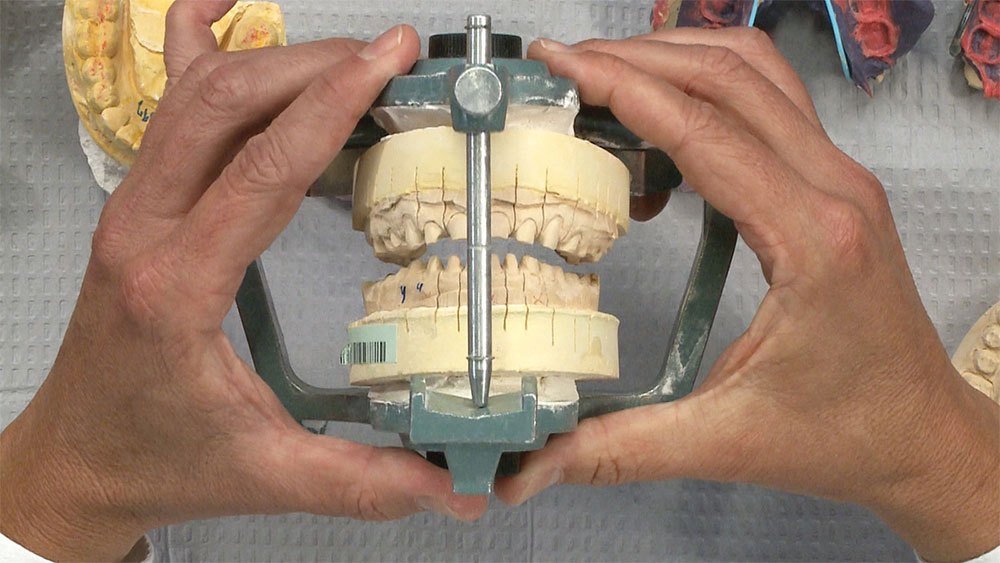Defend the Dimension … the Vertical Dimension! Case of the Week: Episode 136
In our Case of the Week, we’ve got a doctor who really took a logical approach to maintaining the vertical dimension on a full-mouth BruxZir® restoration case. Everything has been prepped on the upper and lower, and in cases like this, it’s sometimes difficult for dentists to be able to take a good bite registration for us, especially when we want to maintain the vertical dimension that we know the patient is comfortable with. Let’s take a look at what the doctor did to get a great result.
Figures 7a, 7b: We know the patient is comfortable at that previous vertical. And the best way to be able to maintain that vertical is to take the fully prepped patient, and place the BioTemps that have all been relined on the lower, just like they were on the upper, at the proper vertical dimension. You place them on the bicuspids and molars on both sides and on both arches so that when the patient bites together, they’re at their normal occlusal dimension because the temporaries are in place.
Figures 8a, 8b: Then, when the patient bites together, you just squirt a little bite registration in between the anteriors so, intraorally, the upper and lower temporaries are in place and holding the patient open at the right dimension here on the anterior. Once you have this little bite segment here on the anterior, you’ll be able to take out the temporaries on one side, and still have the temporaries on the other side.
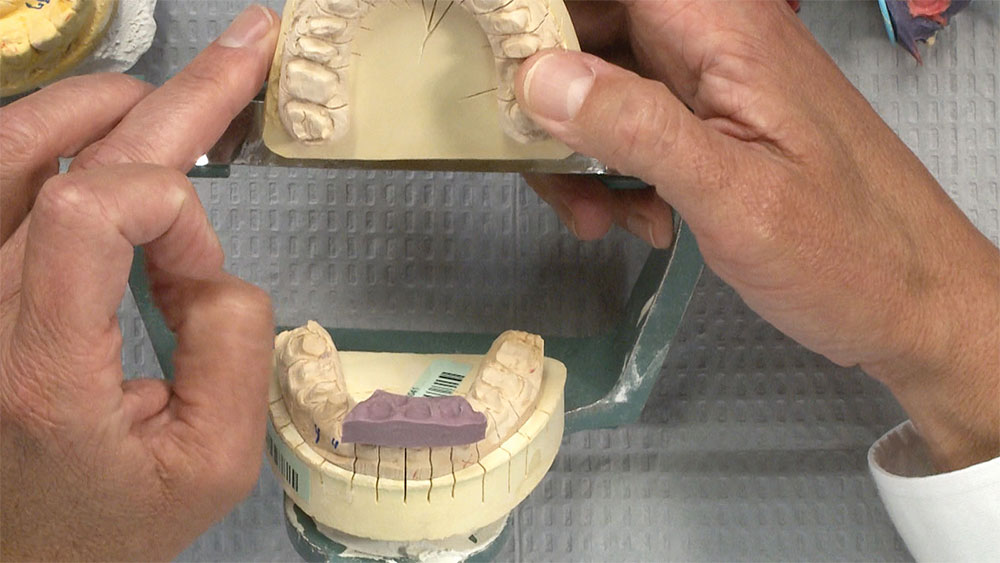
Figure 9: The temporaries on #2–5 alone are off, and we have our anterior bite in place. But when the patient closes together, we still have the same vertical dimension to take the bite registration for #2–5.
Figures 10a, 10b: So now we have two pieces of bite registration, and we still have the temporaries over on the other side.
Figures 11a, 11b: Then lastly, we can have the patient open again, take out the temporaries on #12–15, and do one more bite registration in between those teeth. And because we had the temporaries segmented like that, we’re able to do all of these at the same time, segmentally. Now, the vertical dimension represented by the three bite registrations is exactly the same as when the patient started off before the teeth were prepared. So we’ve maintained it in the BioTemps and we’ve maintained it with the bite registration as well.

